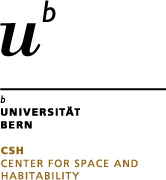Feasibility study
Science goals
SenseLife aims to build the first space-borne experiment designed to remotely detect living organisms using circular polarisation. The main goal of the project is to identify alternative biosignatures than those traditionally used in Earth/space remote sensing sciences. To this end, SenseLife will monitor the Earth's surface with full-Stokes spectro-polarimetry to build a library of benchmark data that characterises inhabited and uninhabited environments on our home planet. This includes deserts, rainforests, plains, oceans, ice shelves, polar regions, as well as water clouds and aerosols. Our team will use these benchmark data to inform future (exo-)planetary spectro-polarimetric characterisation with large-aperture telescopes and space missions, which will seek to exploit life's distinctive homochirality in and beyond the Solar System.
This is an important endeavour because life's homochirality is considered as one of the most reliable biomarker. The key of SenseLife is to use laboratory measurements to interpret larger-scale, remote observations of the Earth to detect biotic sources in the integrated, remote observations. The critical question that SenseLife will address is whether we can identify and characterise Earth's life homochirality using remote sensing. The novel aspect of SenseLife is to use the circular polarisation of light reflected off the Earth as a means to discriminate between biotic and abiotic spectral signatures from pigments at large scales, which has never been done before. SenseLife will thus investigate an alternative and complementary pathway to search for biosignatures remotely, which has so far mostly focused on the detection of specific gas molecular features produced by life in planetary atmospheres. The portfolio of applications is broad and includes the search for homochirality in the plumes and on the surfaces of the Solar System's icy moons, which could be conducted within a decade from now.
First airborne campaign
In September 2019, following the first outdoor measurements campaigns, we embarked the FlyPol instrument aboard a privately-owned Enstrom 280C piston helicopter based in Môtiers (NE) airfield. This last-minute opportunity window was limited to a 20 min-long flight during one afternoon, on Tuesday September 17th, 2019. The picture below shows the helicopter on its airfield base in Môtiers and illustrates the setting up of FlyPol and its control box.

The flight path is shown in the image below:

The results of this flight campaign have been published in Patty et al. 2021.
